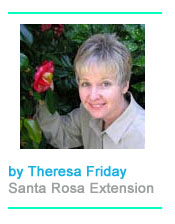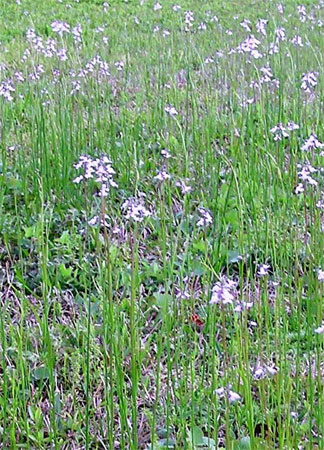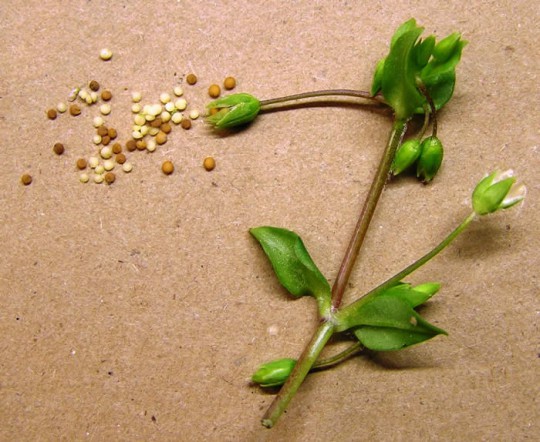All Those Weeds In Your Yard Now Mean Many More Next Year
March 10, 2012
 The spring equinox signals the transition from winter to spring. Temperatures along the Gulf Coast this time of year are also transitioning. We will experience increasing periods of warm weather, but we are still likely to have at least one more cold snap.
The spring equinox signals the transition from winter to spring. Temperatures along the Gulf Coast this time of year are also transitioning. We will experience increasing periods of warm weather, but we are still likely to have at least one more cold snap.
Landscapes are also in a transitional period. Lawns are slowly coming out of dormancy. Bulbs are poking their heads out of the ground to enjoy the sun. Even the insects are beginning to move about. Gardeners who are finding their way outdoors are shocked to see more weeds than they imagined.
Most of the weeds you see now are what we term winter annuals. They grow annually from seed during the fall through early spring. Many of these weeds (henbit, annual bluegrass, chickweed, etc.) will eventually die when the temperatures finally warm up for the season.
Winter weeds are now flowering heavily which is why you see the bright purples, yellows, and whites in the landscape. Since they are flowering and are in a reproductive stage, they will soon be completing their life cycles and dying. Spraying them at this time with a weed killer (herbicide) to try to control them is of little value.
 However, if something is not done to remove the weed seeds being produced by these winter annuals, expect a bigger weed patch next year. Remember the old saying, “One year’s weed–seven years’ seed.”
However, if something is not done to remove the weed seeds being produced by these winter annuals, expect a bigger weed patch next year. Remember the old saying, “One year’s weed–seven years’ seed.”
One guaranteed way of getting rid of the weed seeds is hand removal. When you have a small number of weeds, physical removal is your best option. Just remember not to shake the plant to remove the dirt; you’ll likely be shaking off some weed seeds also.
Mowing the lawn and collecting your clippings will also remove some of the seedhead canopy. If you can do this prior to the seeds maturing, it will help reduce next fall’s seed source.
Vow to use a pre-emergent herbicide to help prevent winter weeds. For pre-emergent control of winter annual weeds, apply a herbicide when nighttime temperatures drop to 55° to 60°F for several consecutive days. So mark your calendars now to apply a pre-emergent herbicide in early October in North Florida.
Next, vow to apply postemergent herbicides earlier in the winter when these young weeds are small and actively growing. Don’t wait until March to try to control winter weeds, it’s just too late.
As winter weeds begin to die off, they will create some additional problems. Their death will leave bare patches in the lawn. Unfortunately, a barren spot means that the summer weeds, such as crabgrass, spurge, and chamberbitter will probably start filling in the area. It’s best to try to repair these areas as soon as possible with sod, plugs or sprigs.
 In additional to winter annual weeds, we have to contend with perennial weeds. Perennial weeds live for multiple seasons and flower more than once. Perennial structures, such as rhizomes, stolons, nutlets, or roots, survive from year to year. Perennial weeds are not effectively controlled with pre-emergent products.
In additional to winter annual weeds, we have to contend with perennial weeds. Perennial weeds live for multiple seasons and flower more than once. Perennial structures, such as rhizomes, stolons, nutlets, or roots, survive from year to year. Perennial weeds are not effectively controlled with pre-emergent products.
There are a few perennial winter weeds that you may want to control now such as wild garlic, dandelions, clover, and plantains. Several postemergent herbicides can be used to spot treat these perennials. Contact your local Extension Service for more specific recommendations.
As always, be sure to thoroughly read and follow label directions when applying any chemical in the landscape.
Theresa Friday is the Residential Horticulture Extension Agent for Santa Rosa County.
Comments
3 Responses to “All Those Weeds In Your Yard Now Mean Many More Next Year”



Oak Hill Cemetary is overrun with some kind of purple looking weed .
weeds are pretty. I think I have every one she named.
That’s why I grow so many, not just because I’m lazy.
What a great article! I learned so much. Thankyou.